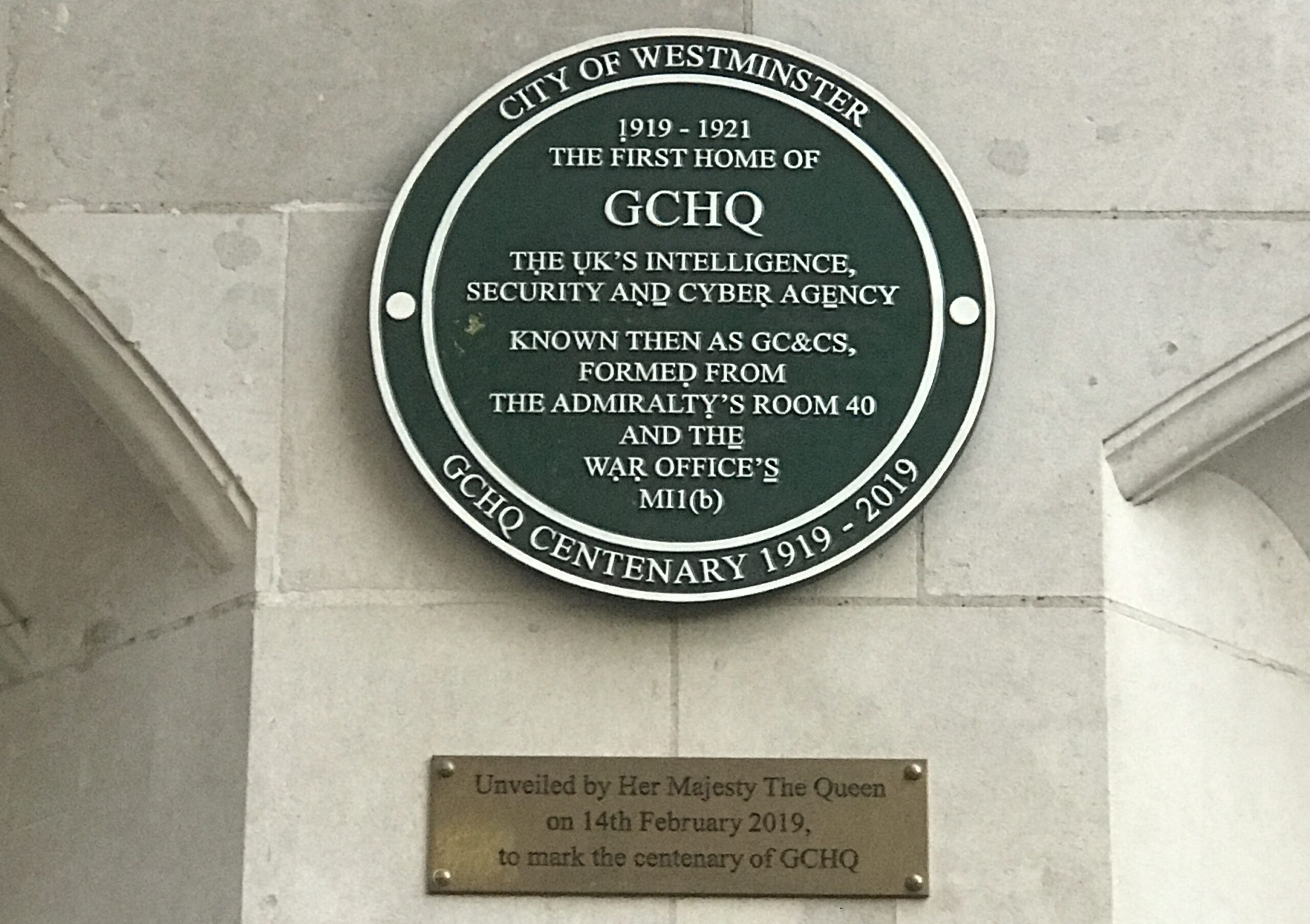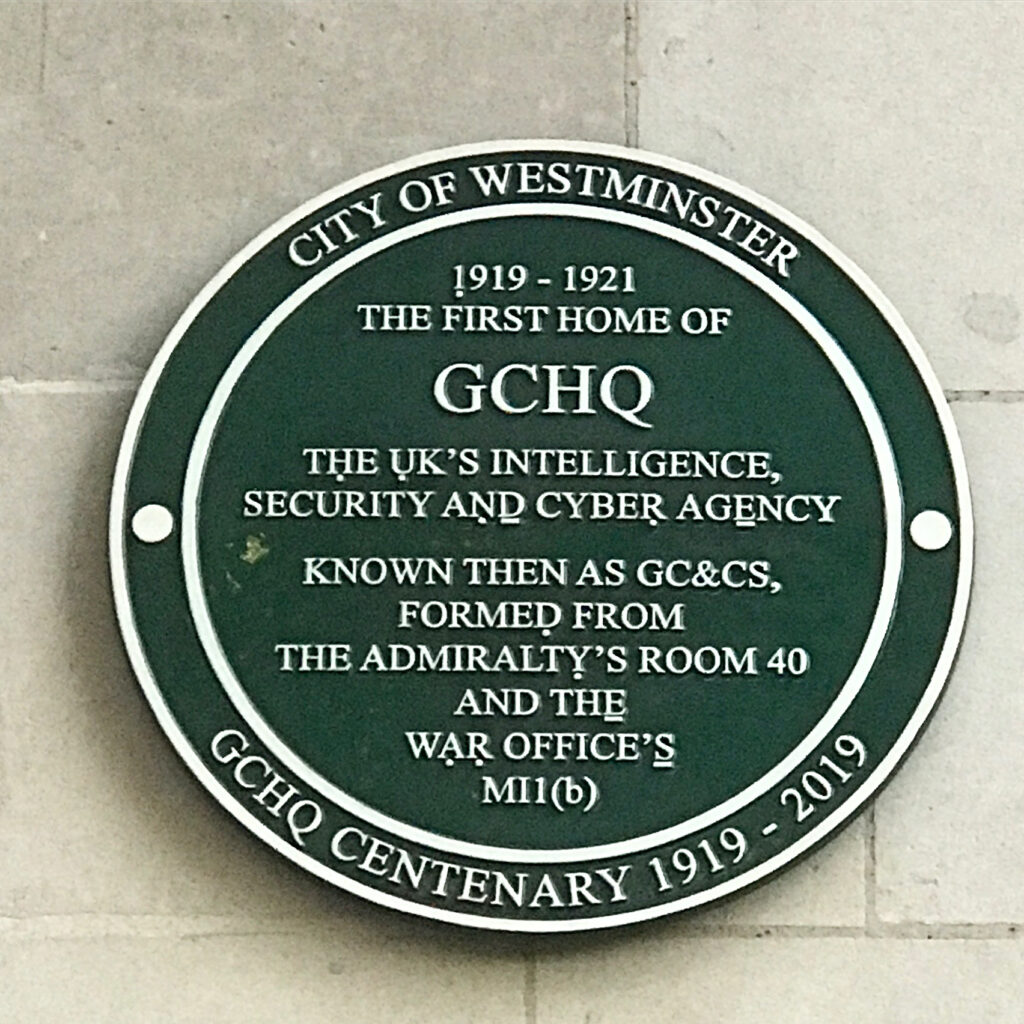
On a refurbished Edwardian office block at 13-15 York Buildings – just down from Strand on the way to Embankment Gardens – is a green City of Westminster plaque that was unveiled by HMQ on Valentine’s day 2019.
It commemorates the first home – and the centenary of the founding – of the ‘Government Code and Cipher School’. This anodyne name was given to the organisation that came about from the merger of two of the codebreaking outfits of WW1, the Navy’s ‘Room 40’ (which was their original location in The Admiralty) and the Army’s ‘MI1(b)’. It is therefore the original home of the present day intelligence gatherers at GCHQ, and of the WW2 codebreakers of Bletchley Park.
In charge of the new combined service was Commander Alistair Denniston, who had run Room 40 during the war. His appointment to the role was insisted upon by Churchill (who, as First Lord of the Admiralty, had had overall responsibility for Room 40 at the outbreak of the war). He was, said Winston, “the best man we have”.
In the 2014 movie ‘The Imitation Game’ with Benedict Cumberbatch and Keira Knightly, Deniston is played by Charles Dance. The film portrays him as a blinkered martinet who cannot grasp the intelligence of the geniuses who work for him. This is the 180° opposite of the truth; Denniston was extremely skilled in his handling of the eccentric and often wayward characters that he had employed. It was Denniston who realised that the codebreaking of the future would require additional skillsets to those that had been valuable in WW1 and who set out to recruit mathematicians (such as Alan Turing and Gordon Welchman), scientists, engineers and others who could break the new ‘machine’ ciphers, such as Enigma, that were being used by foreign governments.
In the early 1920s the GC+CS was transferred to the responsibility of the Foreign Office and placed under the overall command of Admiral Hugh Sinclair, head of the newly formed Special Intelligence Service (MI6), and relocated to the SIS offices at 54 Broadway.
With the threat of war in the 1930s – and particularly the fear of the annihilation of London from the air – SIS and GC+CS looked for a site out of London to where they should decamp on the outbreak of hostilities. So it was that in 1938 Sinclair bought Bletchley Park. (He actually bought it with his own money, as he felt that going through bureaucratic channels would take too long and the opportunity would be lost. There is no record of whether he was ever reimbursed.)
The small GC+CS (the ‘Golf, Cheese and Chess Society’ as it was sometimes called by its members), which employed a few dozen people in 1919 and fewer than 100 in 1939, had close to 10,000 working at Bletchley and its outstations by 1945, and the work there is thought to have shortened the war by at least two years.
One of the cover names used by GC+CS during WW2 was the entirely bland ‘Government Communications HQ’ and it was as GCHQ that the organisation was renamed postwar.
Look at the plaque and you might notice dots and dashes under some of the letters. These pick out the words ‘1 hundred years’ – commemorating the centenary – and in turn, those dots and dashes spell the word ‘secret’ in morse code.

